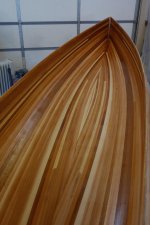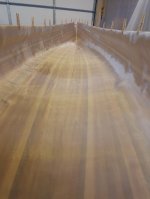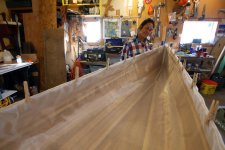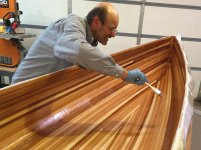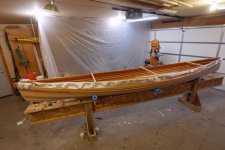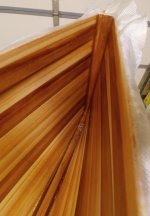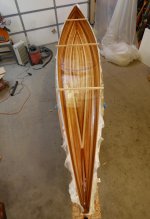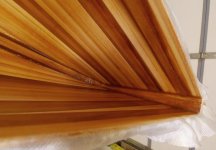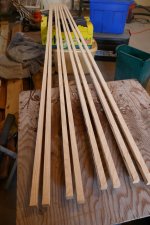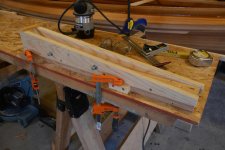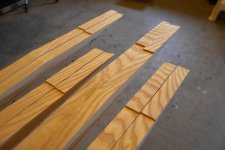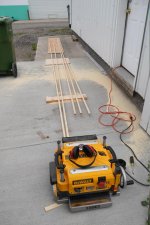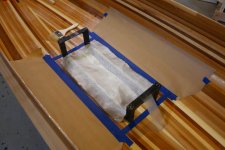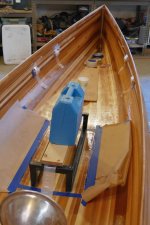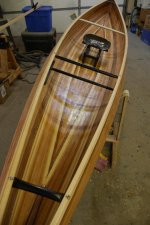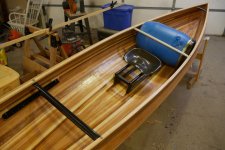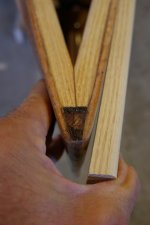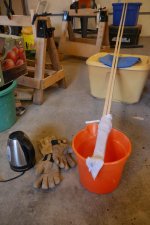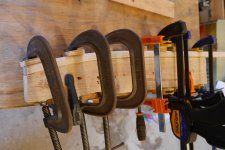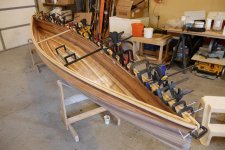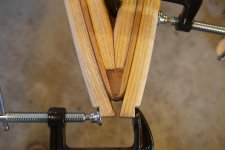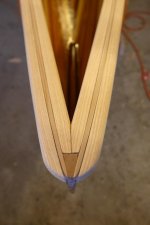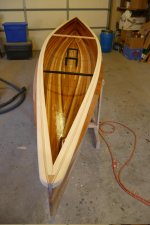Mark,
Very interesting how differently we all build...I stripped my Kite only as far as my laminated stems, so my length was exactly what I wanted. I also kept my stem pieces lower than the keel line by the thickness of my strips. So, from keel line to uppermost stem section, my strips transition from overlapping to flush.
I have a series of photos here, should you want to see how I completed my Kite.
I didn't realize at the time that I was reading your progress posts what a dilemma you would face with the filler blocks. I had imagined that those blocks entirely filled the gap.
Anyway, back to your quandary. I would epoxy seal all of the exposed interior as well as possible. If you're concerned about strength, don't be. The stems are the strongest section of the hull. You will likely have a tough time glassing that area, but I'm sure you'll figure out a clever way to make it easy.
If you are planning to put a through fitting in the stems for lining, you should probably do so now, while you can see (and seal/fillet) the bushing as it passes through the stems.
Love the photos, I really like the design and the stem to stem crease.
BTW, did you weigh it yet?
Very interesting how differently we all build...I stripped my Kite only as far as my laminated stems, so my length was exactly what I wanted. I also kept my stem pieces lower than the keel line by the thickness of my strips. So, from keel line to uppermost stem section, my strips transition from overlapping to flush.
I have a series of photos here, should you want to see how I completed my Kite.
I didn't realize at the time that I was reading your progress posts what a dilemma you would face with the filler blocks. I had imagined that those blocks entirely filled the gap.
Anyway, back to your quandary. I would epoxy seal all of the exposed interior as well as possible. If you're concerned about strength, don't be. The stems are the strongest section of the hull. You will likely have a tough time glassing that area, but I'm sure you'll figure out a clever way to make it easy.
If you are planning to put a through fitting in the stems for lining, you should probably do so now, while you can see (and seal/fillet) the bushing as it passes through the stems.
Love the photos, I really like the design and the stem to stem crease.
BTW, did you weigh it yet?

